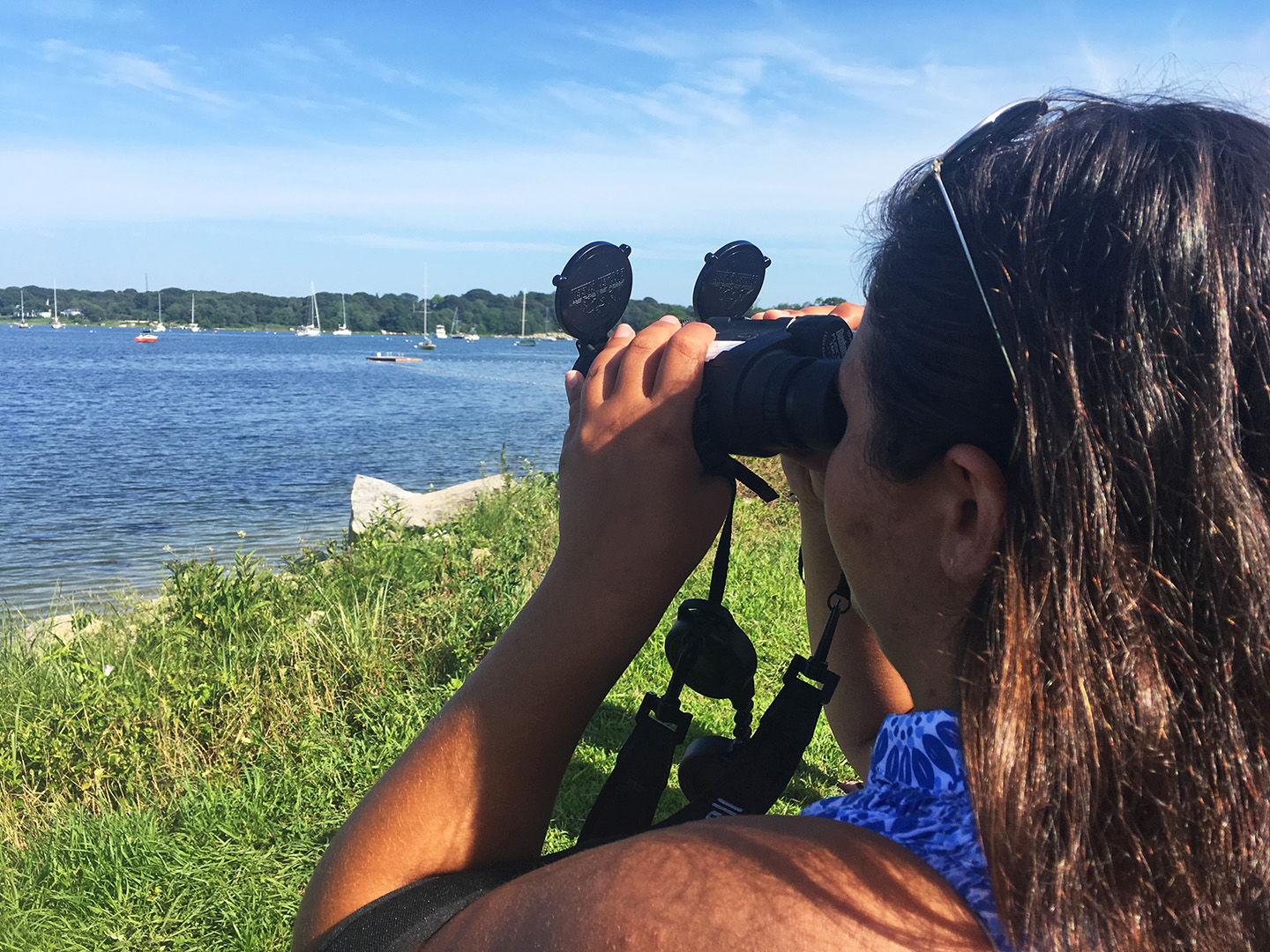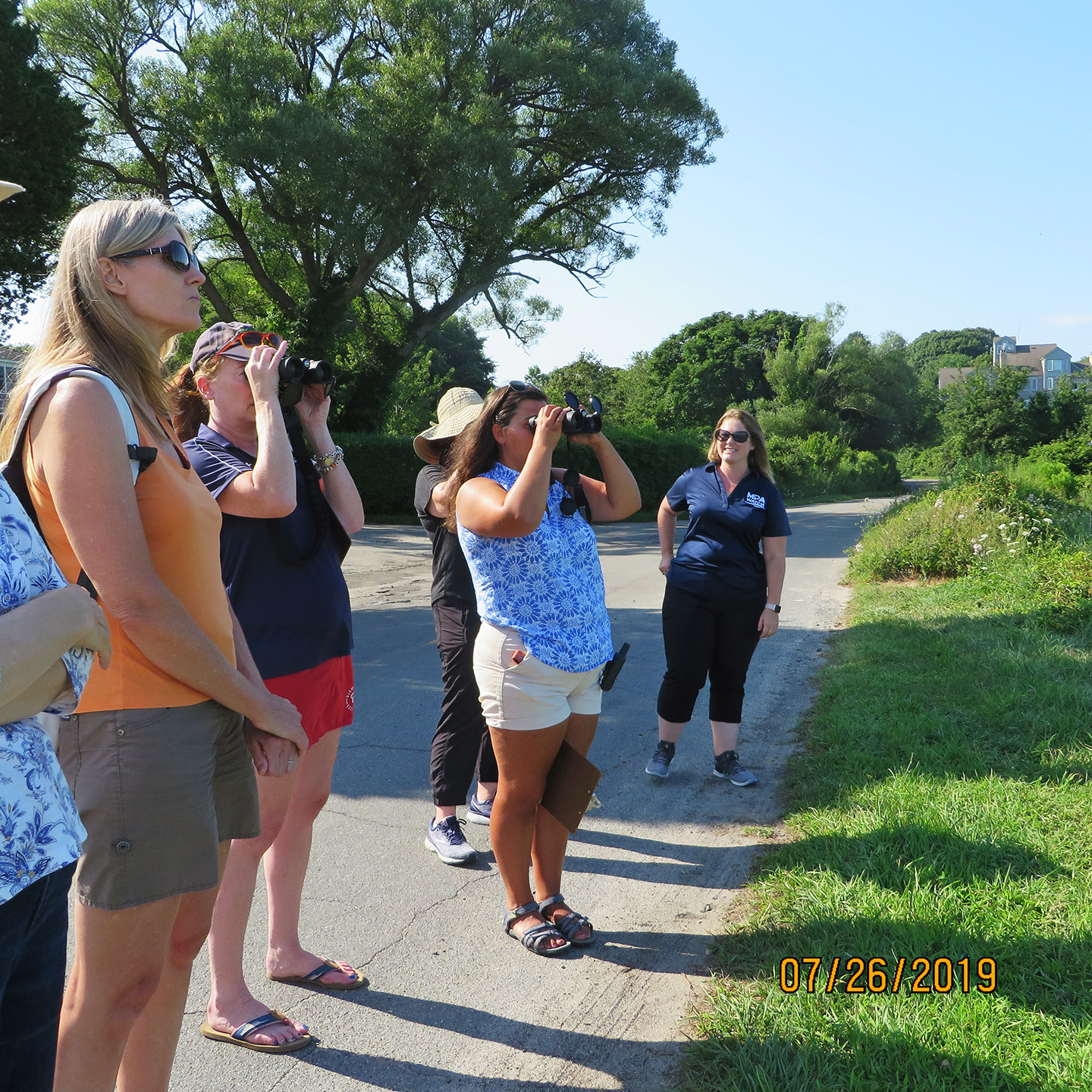Conserving Seagrass
Human activities in the nearshore waters of Fishers Island
In anticipation of the Fishers Island Seagrass Management coalition producing a protection plan for the eelgrass found in our nearshore waters, the Museum joined a citizen-science program called Marine Protected Areas Watch (MPA Watch). In this program, volunteers are trained according to a specific protocol to survey various human activities that occur in the nearshore waters. This information is useful in determining what management activities may or may not be needed.
Museum volunteers started collecting MPA Watch data in 2019. After two years of data collection, the Museum hired Dr. Stephen Arnott of City College of New York to analyze the data. The goal of this program is to quantify the types and intensity of various human activities in or near the seagrass beds. For this work, five sites were chosen: North Hill, Flat Hammock, West Harbor, 8th hole of F.I. Club, and East Beach.
Over the course of the two summers, 50 transects were walked by the volunteers, who recorded 290 human activities. Of these activities, 213 occurred on-shore, 47 were boating activities, and 30 were off-shore activities. When all the activities were considered together (shore, boating, and offshore), there was a significant difference in the frequency of activity. West Harbor had the highest activity levels, followed by Flat Hammock, 8th hole, North Hill, and East Beach. Following the overall pattern, shore activities were most frequent at West Harbor, intermediate at Flat Hammock and 8th hole, and infrequent at North Hill and East Beach. Boating, however, was most frequent at Flat Hammock, West Harbor, and 8th hole, and infrequent at North Hill and East Beach.

MPA Watch volunteer recording boat activity, West Harbor, July 26, 2019.
Photo courtesy of FISM.
MPA Watch volunteers learning observation protocols, July 26, 2019.
Photo courtesy of FISM.
Boating activity was recorded on 47 of the 50 sampling days. The types of boats broke down as follows: 28 powerboats, 12 sailboats, 3 recreational fishing boats, 3 kayaks, 1 jet ski and 1 commercial fishing boat. Of these boats, 25 were anchored, 12 were underway, 6 were moored, and 4 were classified as unknown status. The citizen-science data was supplemented with data on stationary boats taken from Google Earth Pro, which showed an additional 87 boats. From the satellite images Arnott noted that the anchored boats at Flat Hammock, 8th hole and North Hill were frequently located within or very close to the seagrass meadows.
Arnott analyzed the relationship between activities and time periods. Not surprisingly, the summer months were busier than the fall months. Early afternoon (12-3 pm) was significantly busier than other times of day. There was not a statistical difference between weekdays and weekends. Relationships to weather were also analyzed, and again the results were intuitive. Activities were more frequent on hotter days and on clear days, compared to colder and cloudy days.


